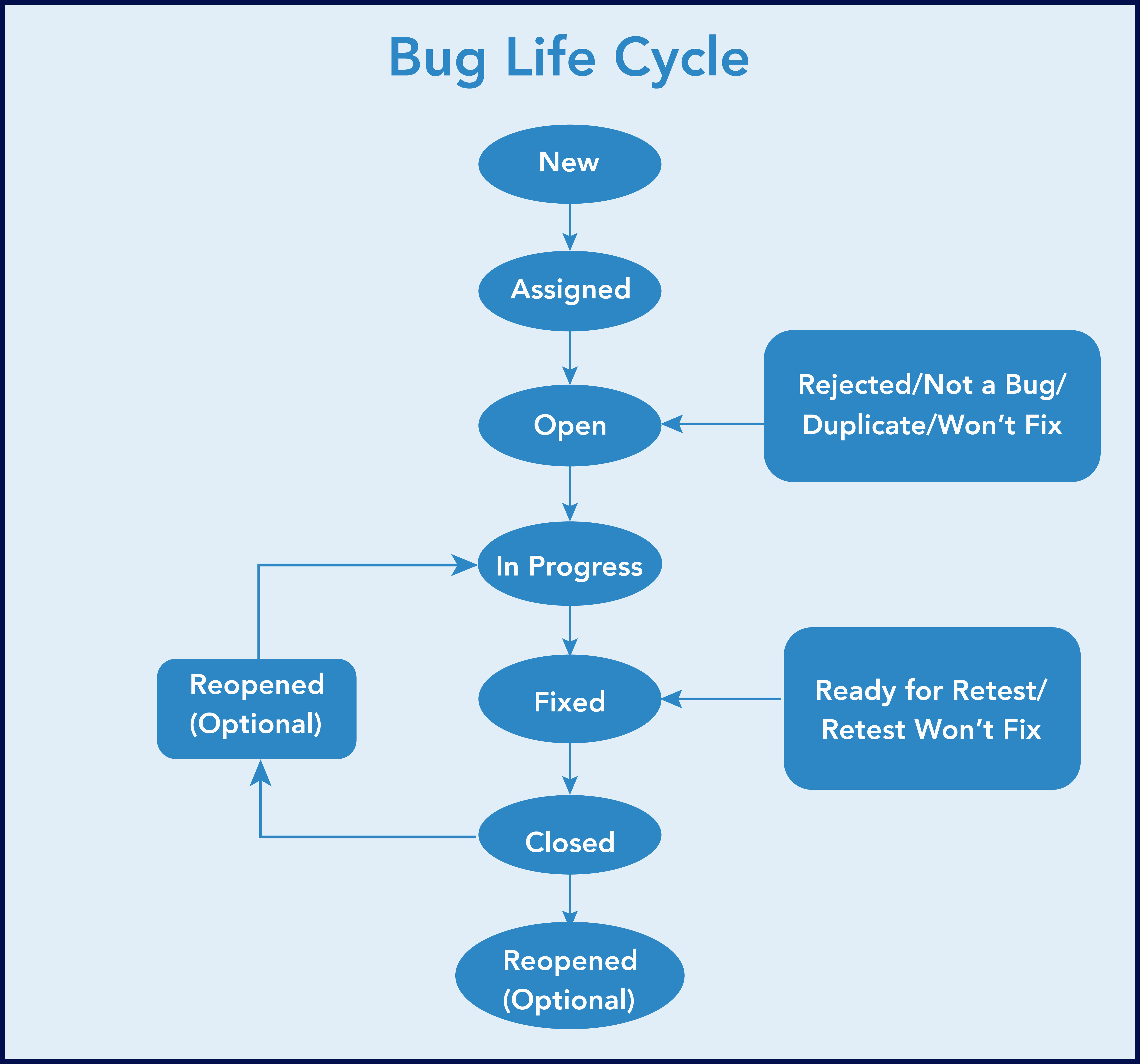Most people wrongly assume that QA Engineer’s role is limited to bug finding. Or say, their responsibility ends after finding a bug.
However, there are more interesting things happening behind the scenes - regarding what happens after a bug is found.
After a Bug is found, it then goes into a journey called the Software Bug Life Cycle. It involves the whole development team as stakeholders, and ends when the bug is fixed.
Understanding this cycle is crucial for effective communication, resolutions, and enhanced software quality.
In this blog, let’s get an understanding of the Bug Life cycle and why it matters.
What is the Software Bug Life Cycle?
The Bug Life Cycle, also known as the Defect Life Cycle, represents the sequence of states a bug goes through from discovery to closure. Each stage is a checkpoint that defines the current status of the bug and the action required.
Typical Stages in the Software Bug Life Cycle:
- New: A QA engineer reports the bug and is awaiting triage. No actions have been taken yet.
- Assigned: The bug is assigned to a developer for investigation and resolution. An assignment is usually done by a team lead or a project manager.
- Open: The developer has acknowledged the bug and is working on a fix.
- In Progress: The developer is actively coding a solution or analyzing the issue.
- Fixed: A fix has been made and submitted. The bug status is updated, and it’s sent back to QA for verification.
- Ready for Retest / Retest: QA retests the application to confirm whether the issue is truly resolved in the updated build.
- Verified: QA confirms the bug is fixed and behaves as expected. The bug is ready to be closed.
- Closed: The bug is officially marked as closed. No further actions are needed.
- Reopened (Optional): If the bug reappears or wasn’t fixed properly, it’s reopened and reassigned.
- Rejected / Not a Bug / Duplicate / Won’t Fix
- Rejected: The report is invalid.
- Not a Bug: The reported behavior is intentional or expected.
- Duplicate: The same issue has already been reported.
- Won’t Fix: The issue is acknowledged but won’t be resolved due to low impact or business decisions.

Why Is the Bug Life Cycle Important?
- Clarity: Helps QA and dev teams stay aligned on bug status.
- Accountability: Defines who is responsible at each step.
- Prioritization: Supports better triaging and faster decision-making.
- Traceability: Makes it easy to track bugs for audits and post-release reviews.
Tips for Effective Bug Life Cycle Management:
- Use proper bug tracking tools like JIRA, Bugzilla, or Azure DevOps.
- Write clear, detailed bug reports.
- Always include screenshots, logs, or screen recordings when possible.
- Respect the defined workflow and transitions in your project or organization.
- Regularly triage bugs in sprint planning or stand-ups.
Real-World Scenario:
- Status: New
- Assigned to a developer → Status: Assigned
- Developer begins work → Status: In Progress
- Developer pushes fix → Status: Fixed
- QA tests the new build → Status: Retest
- Bug is confirmed fixed → Status: Verified
- QA closes the bug → Status: Closed
Now, if the same issue reoccurs in another module, the bug may be reopened and go through the cycle again.
Example of a Bug Life Cycle:
A QA tester is checking the login page of a banking app. When they enter valid credentials, the login button does nothing. Then, a QA files a bug in JIRA.
- New – QA finds the issue and logs a bug: “Login button not working on click”.
- Assigned – The bug is assigned to a developer to fix.
- In Progress – Developer checks and begins a task.
- Fixed – Developer fixes the bug and marks it as fixed.
- Retest – QA retests and confirms the login button now works.
- Verified – QA verified that a bug has been fixed
- Closed – QA closes the bug since it’s fixed.
If the issue happens again during regression testing, QA reopens the bug, and the cycle repeats.
Final Thoughts:
As a QA engineer, your role isn’t just to find bugs, it’s to manage them efficiently through their entire life cycle. Mastering the bug life cycle means fewer surprises, faster resolutions, and better teamwork. It’s a small process that plays a big role in delivering high-quality software.
.……..
Gurzu is a software development company passionate about building software that solves real-life problems. Explore some of our awesome projects in our success stories.
Need help with automating your software tests? Gurzu engineers can help you! Drop us a message.
Have a tech idea that you need help turning into reality? Book a free consulting session with us!
Further Reading
Stop Repeating Yourself: Automate Your End to End Testing with Playwright

